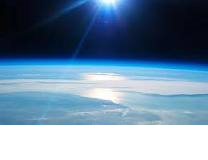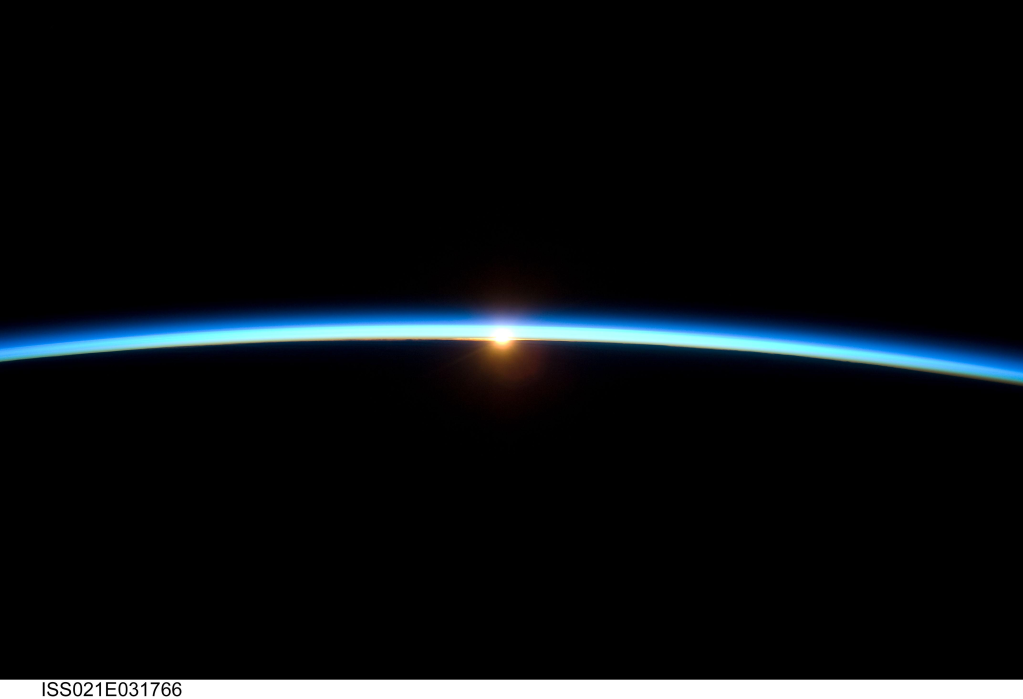when high altitude photographs are taken and people point out that they can see the curve of the planet the general response is that what the observer sees is the area where the suns light reaches and we are infact looking at the illuminated area of the earth. beyond the light are just parts of the earth that are not visible because that is where it is night.
figure 1. high altitude photo taken in the day

as we can see here the illuminated area has an edge that is convex in shape as expected. this is because the light from the sun works like it does in figure 2.
figure 2. artists impression of the light shining on a flat earth

that is where the term spotlight sun comes from. it is not to be taken litterally but its just the term used to explain that the sun illuminates a round area just like a spotlight does.
figure 3. dawn photo taken from a high altitude

however in figure 3 we now see the light from another angle and now it looks as if the shadow is convex and the 'spotlight' is concave in shape.
as sunrises and sunsets happen simultaneously we must concluse that the spotlight effect is both concave and convex at the same time depending where the observer is.
we also observer the same thing on the moon and possibly other celestial bodies, but i have not witnessed these myself.
the experiment can be repeated using a sphere of any size using a direct light source pointing and one half of the sphere. when the observer walks arround the sphere they can observe that the light observed from directly behind it casts a convex shape, but if the observer walks round and observes the area where the sphere is mostly in shadow and only a thin area of light is allowed to be seen they will observe that the shadow is now convex and the light has become concave on its outer edge. this is roughly drawn in figure 3.
figure 3. artists impression of simulated day and sunrise as observed from a high altitude.

the real life images used are from a satellite or as some will say a NASA high altitude plane disguised as a satellite. either was the same pictures can be seen from weather balloons. these pictures are chosen as they show what im trying to discribe quite clearly and high altitude aircraft or weather balloons tend to still have haze distorting the far edge of the visible earth because of the atmosphere.
i have yet to come up with any conclusions as of yet but so far the only time i have been able to reproduce the phenomenon is when i have used a sphere are a test model.
another way to check the results would be to launch my own balloon and not the area that is furthest from view. then check the times beyond that and calculate where the light terminator actually is. but i do not have the means unfortunately.
tom i explained this before here it is for your enjoyment